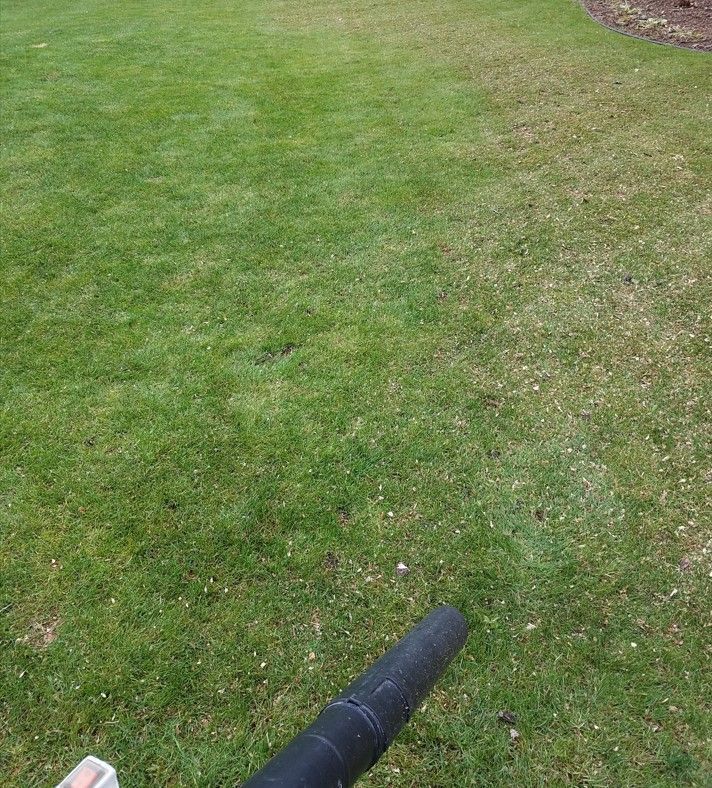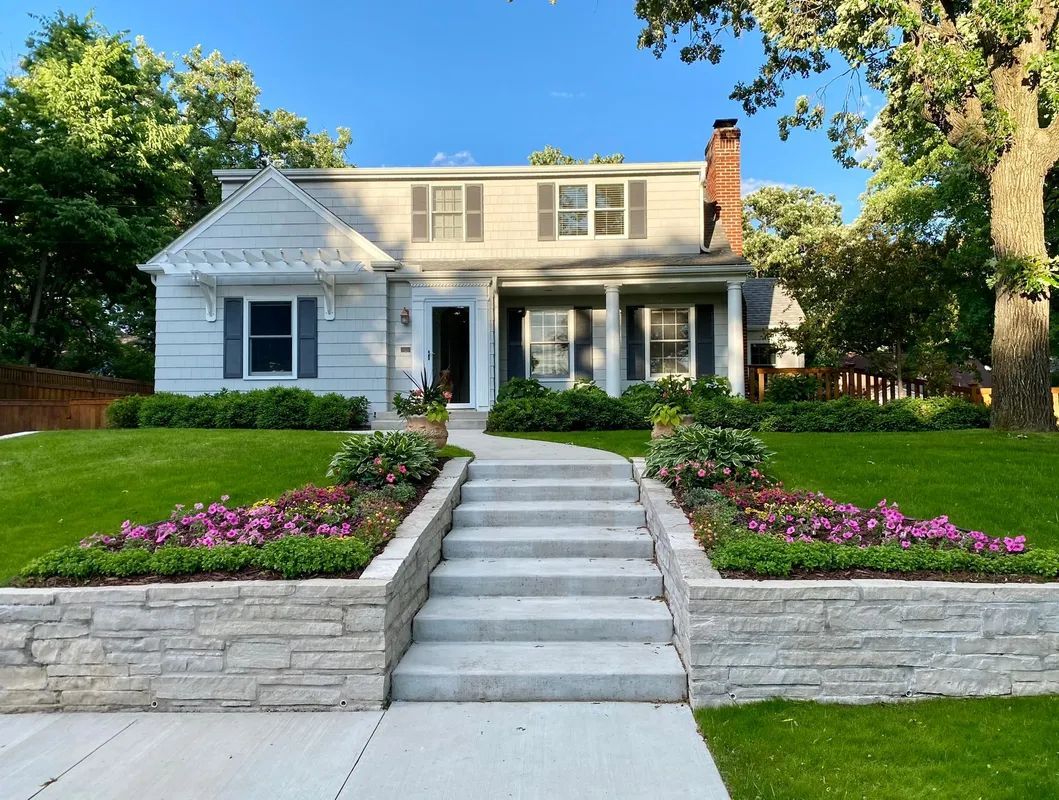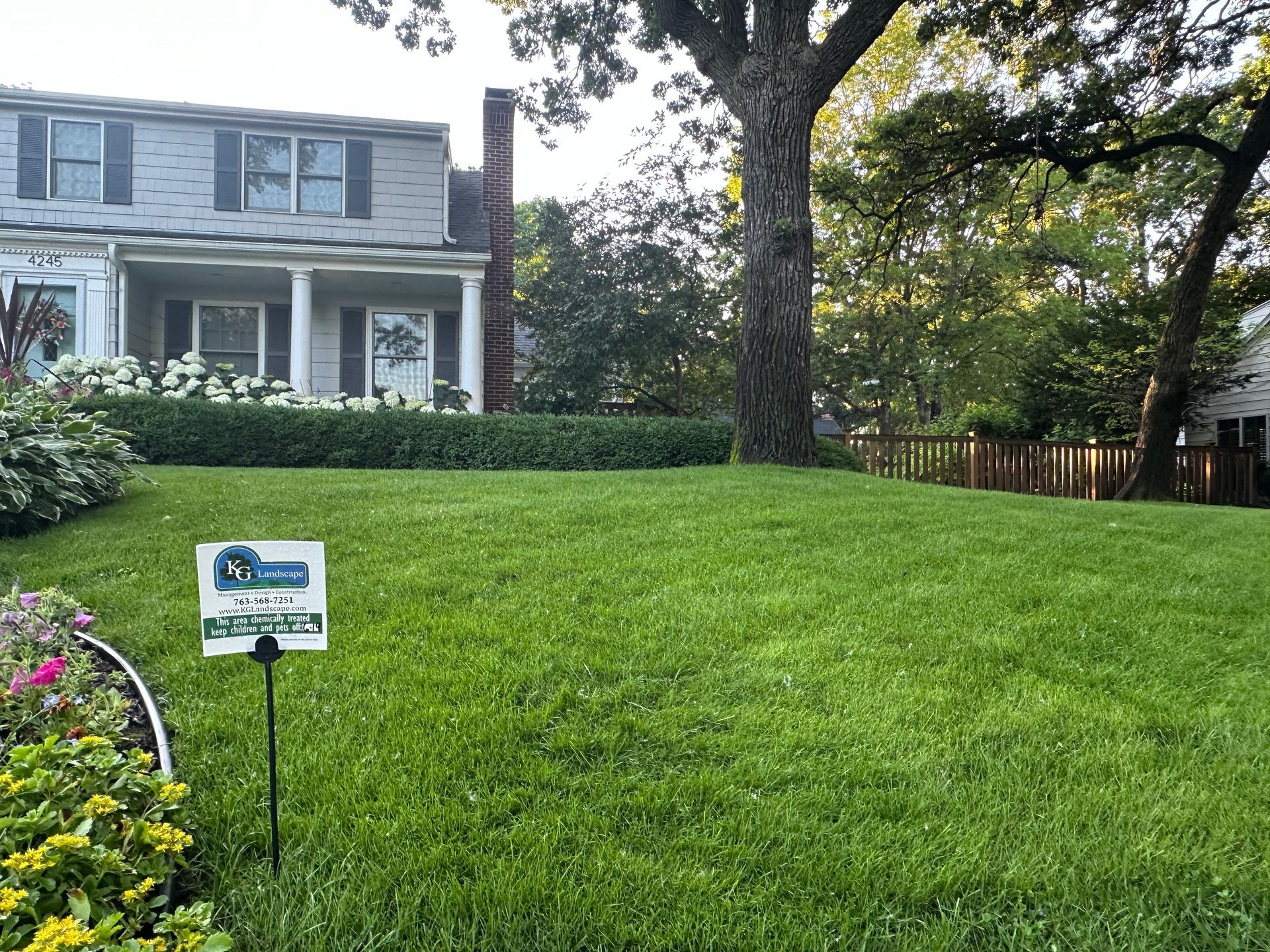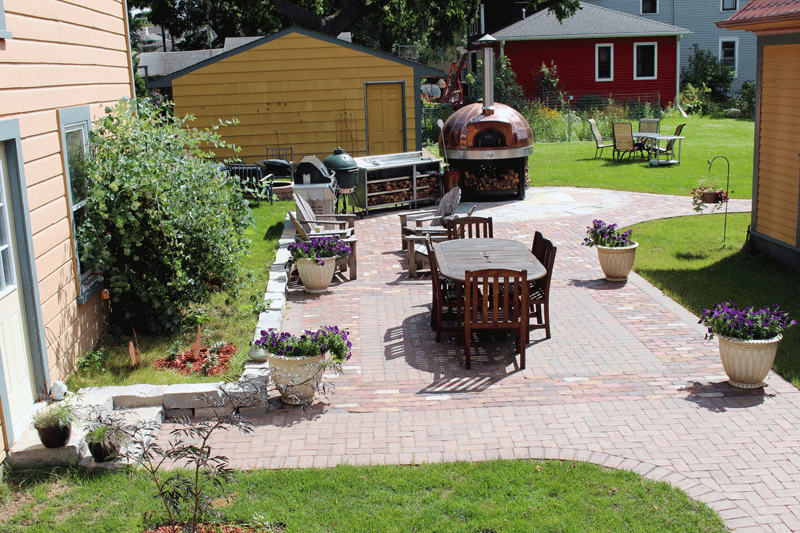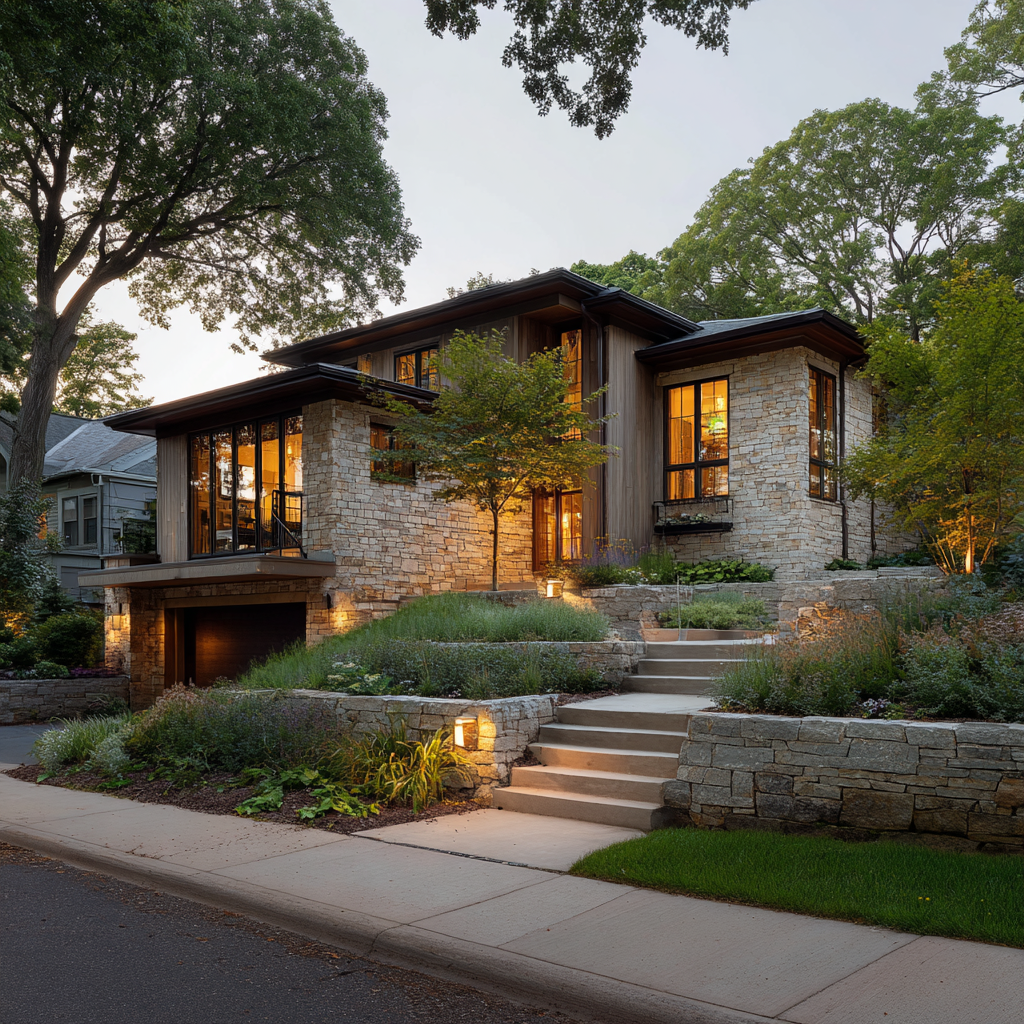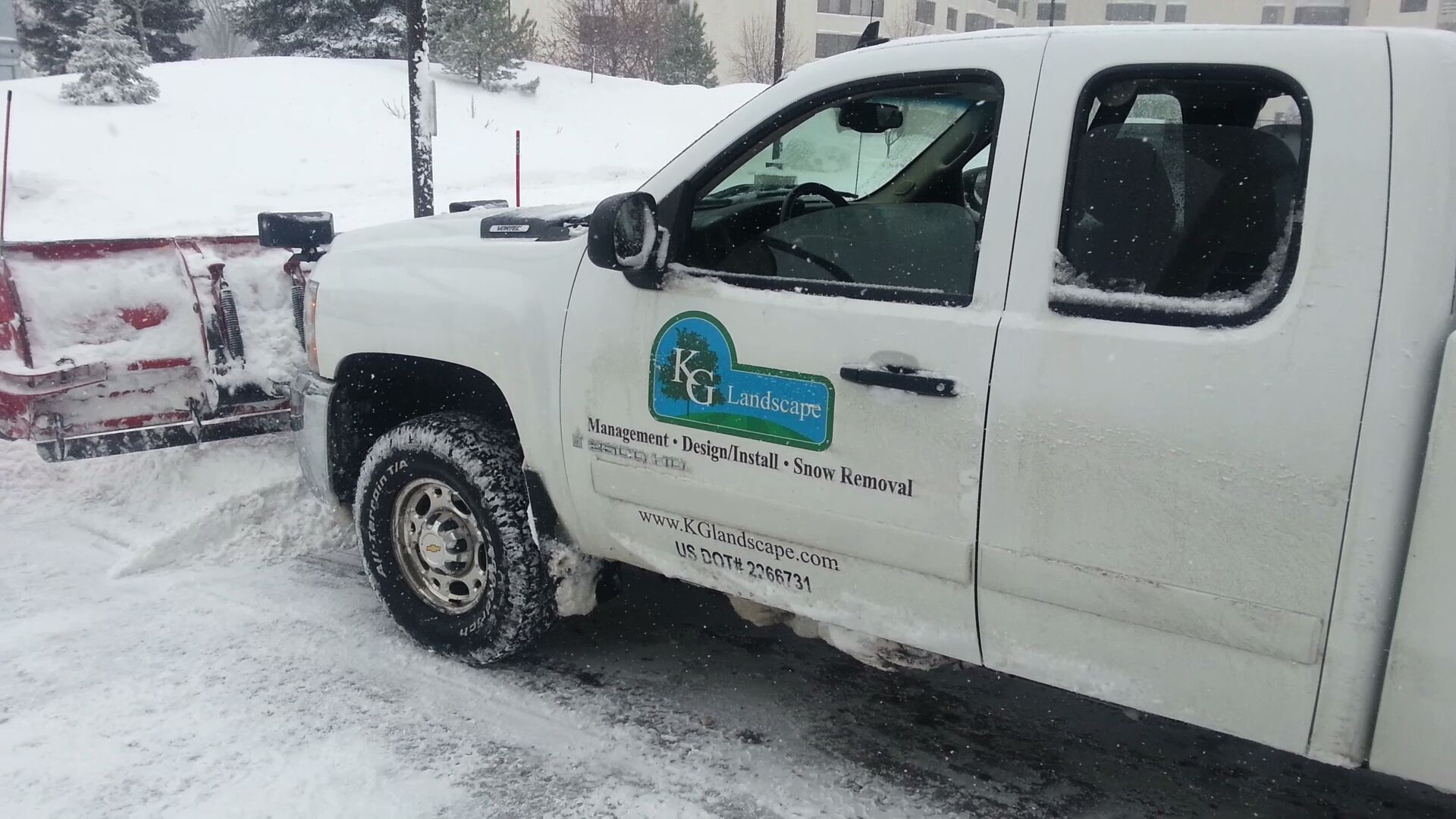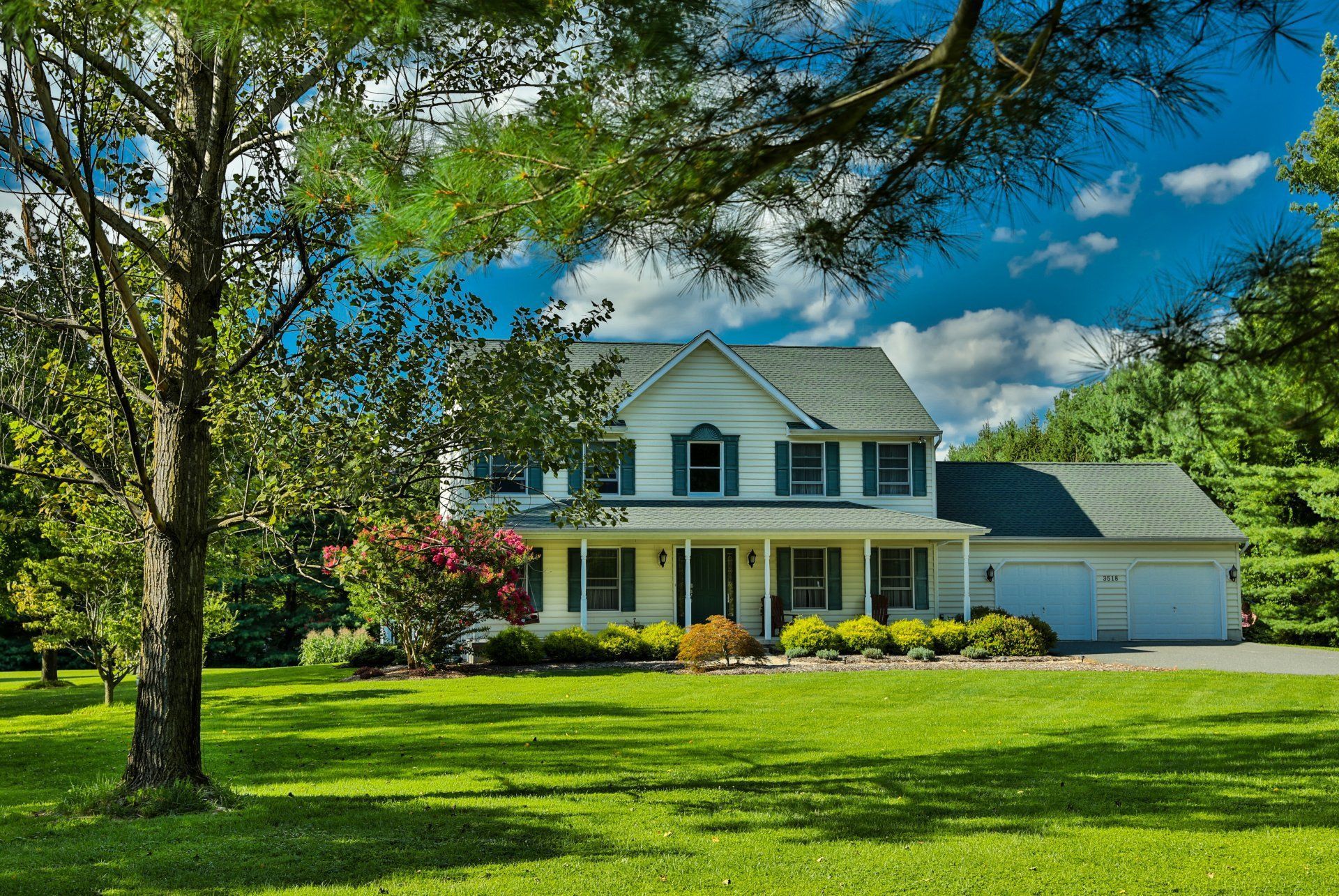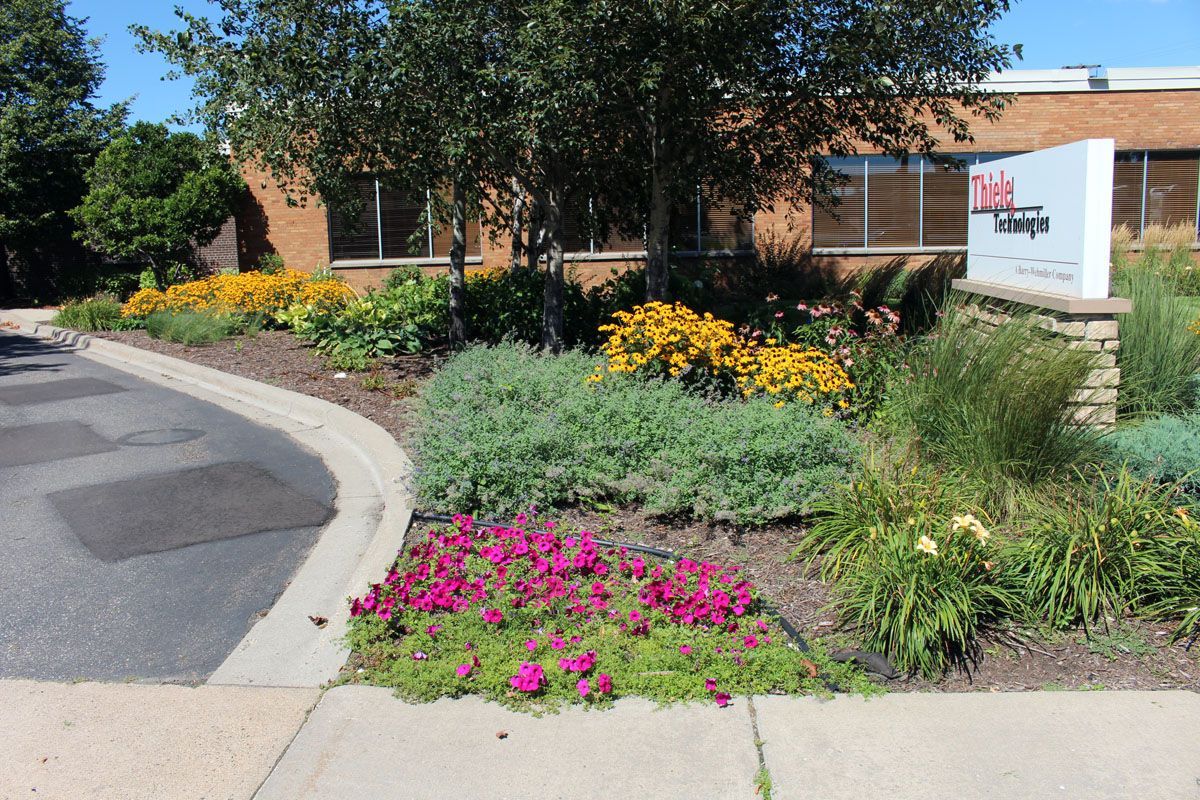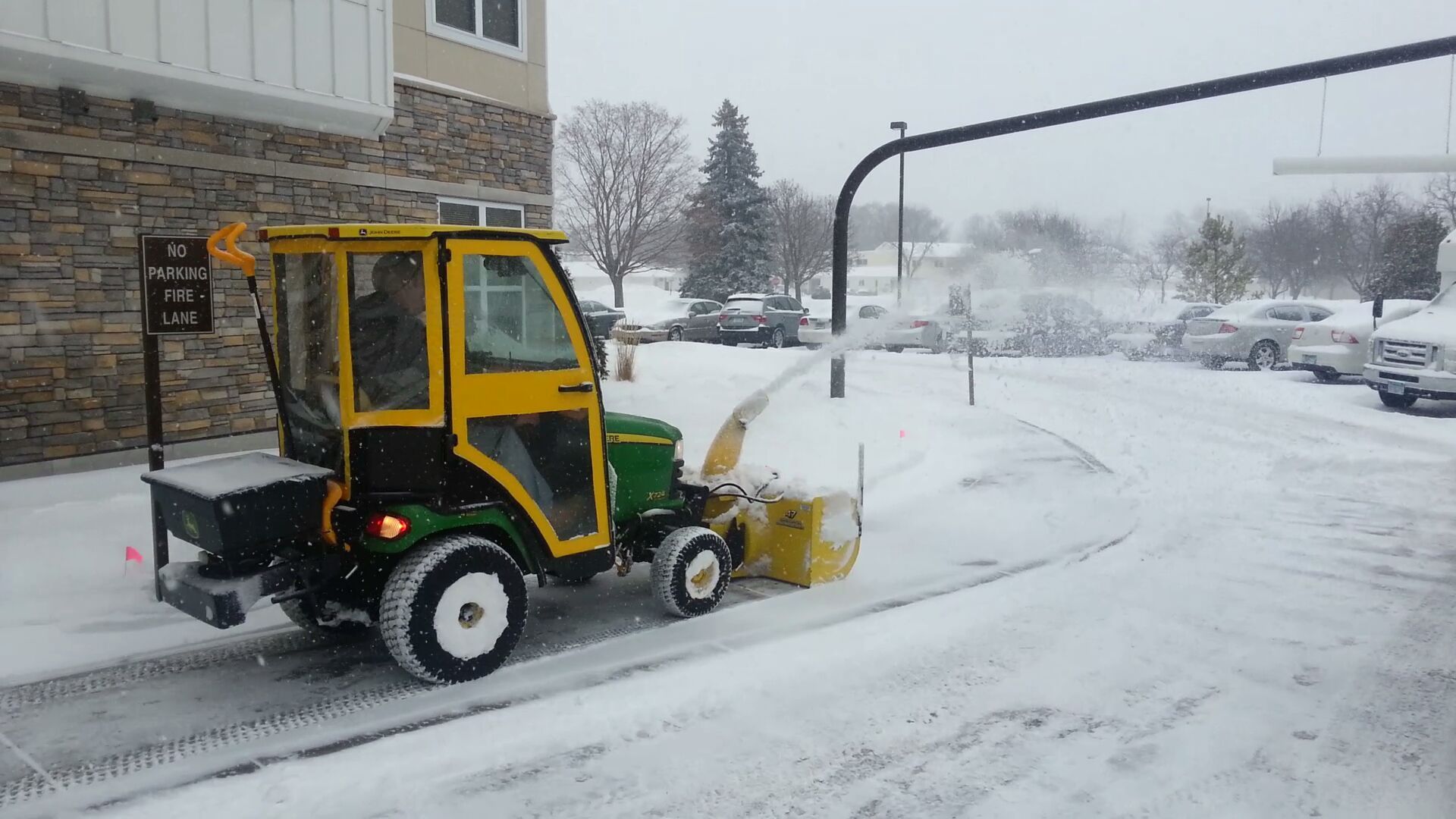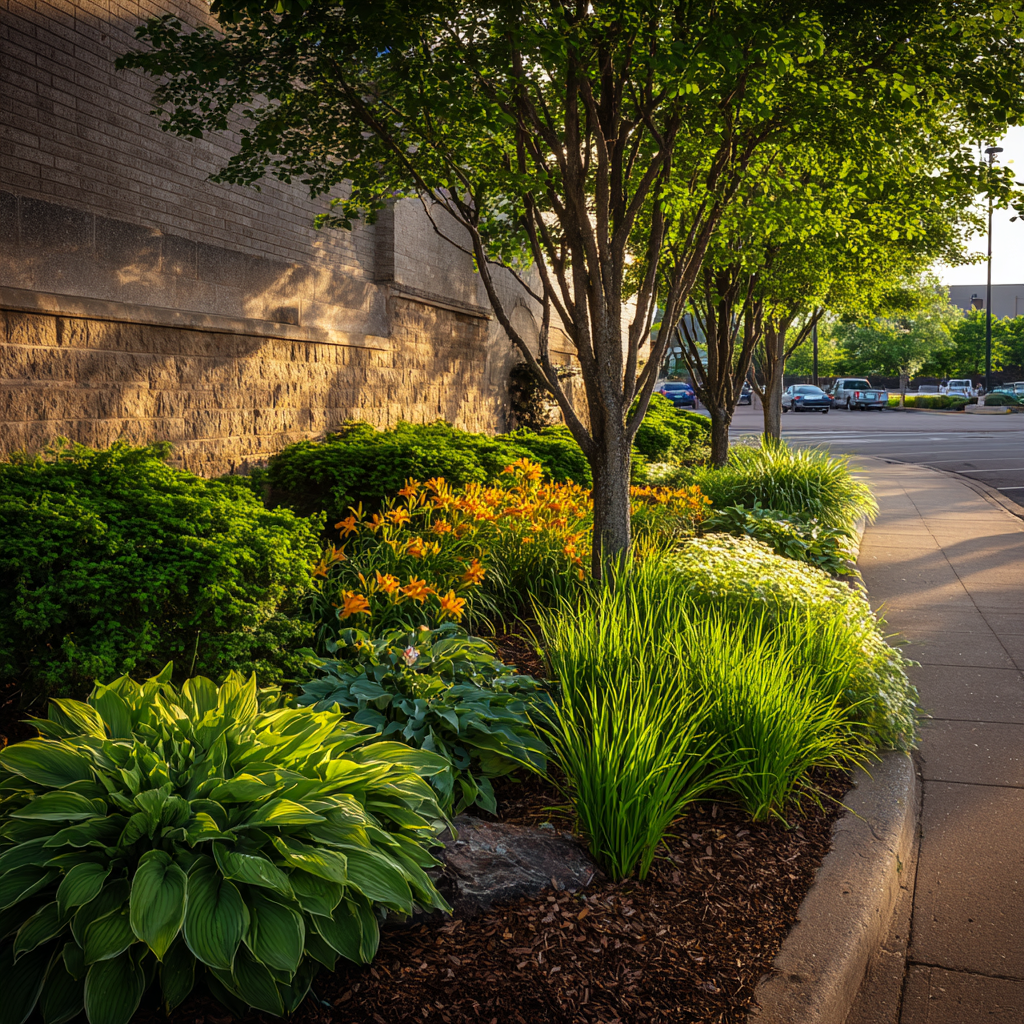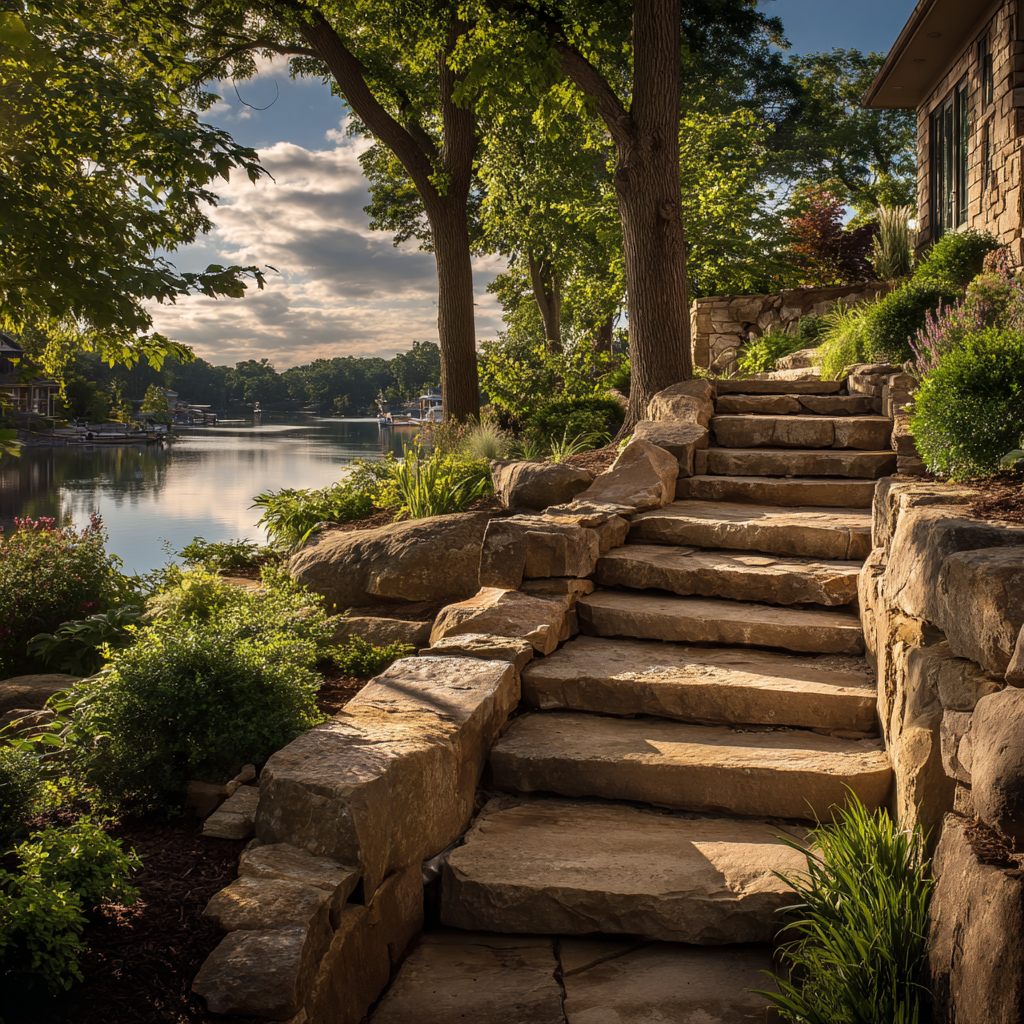How to Manage Thatch in MN Lawns - Do I Need to Dethatch My Lawn in Minnesota?
Expert Lawn Care Advice From a MN Turf Professional
My name is Kent Gliadon and I'm the Owner of
KG Landscape Management
, located in Blaine, MN. I've been in the landscaping and lawn care business for over 20 years and I've always enjoyed sharing my knowledge with customers. I'm writing this article to provide useful information and helpful tips for people that want to improve their lawns.
I received my bachelor’s degree in Environmental Horticulture, with emphasis in Landscape Design & Turf Science at the University of Minnesota and I’ve been helping customers improve their yards in the greater Minneapolis and St. Paul metro area ever since.
Whether you hire us or do it yourself, we want to help you spend your time and money on lawn improvement inputs that will actually work. Because anything worth doing, is worth doing well right?
If you’re in The Twin Cities metro and you'd like to receive an estimate from KG Landscape for any of our excellent lawn care services, please click the request a quote icon below.
MN Lawn Care - How Much Thatch Should There be In My Lawn?
What is Lawn Thatch?
Thatch in lawns, is the interwoven layer of dead plant tissue between the grass blades and soil surface, that has not yet fully decayed. It is composed primarily of stems, leaf sheaths, stolons, crowns and roots.
Some Thatch is Good
A healthy thatch layer helps the soil hold moisture, nutrients like fertilizer and harbors essential microbes. A thin thatch layer also improves the wear tolerance of a lawn, by adding a little “cushioning” and protection around the crown (base) of the grass.
Too Much Thatch is Bad
Excessive thatch is bad for your lawn. A thatch layer that is too thick prevents moisture, air and nutrients from penetrating the soil and reaching down into the root zone, where it can be used by the grass.
- A thick layer of thatch acts somewhat like a blanket covering the soil, making it difficult for soils to breath, reducing the availability of oxygen that is needed by the grasses root systems.
- Grass roots tend to grow extensively within thick layers of thatch, instead of growing deeper down into the soil like we want them too. This makes the turf less heat and drought resistance and more vulnerable to the stresses caused by swings in temperature and moisture.
- Thatch that is too thick can also cause turf disease issues, because stressed grass is more vulnerable to disease.
- When lawns with too much thatch are watered regularly, the thick thatch layer will constantly hold moisture around the crowns and shallow roots of the grasses, which adds yet another form of stress to the plants. Lawns that are constantly wet, are far more vulnerable to certain turf diseases than lawns that are allowed to dry normally between watering/rain events.
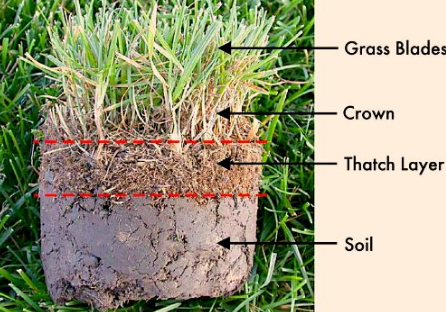
What's the Right Amount of Good Thatch for My Lawn?
Half (1/2) an Inch of Thatch is Perfect
How much thatch should you have in your lawn ideally? Around a
½” or less of thatch is perfect for a healthy lawn
. So, if you have around a half or even less, don't try to remove it.
How to Increase the Thatch Layer if Needed
If you little to no thatch layer in your yard, there are some things you can do to help build your thatch layer.
Pro Tip : Another easy and low cost way to start building up the organic matter in your soil, in addition to top-dressing, is to mulch your leaves in the fall rather than bagging and removing them. This technic also saves a ton of time raking and bagging leaves, it's the only way I do every do fall clean-ups.
- Fertilize your lawn
- Water regularly
- Mulch grass clippings when mowing instead of bagging/removing
- Aerate and overseeding to increase turf density
- If needed, Add organic matter to your soil via topdressing .
Pro Tip : Another easy and low cost way to start building up the organic matter in your soil, in addition to top-dressing, is to mulch your leaves in the fall rather than bagging and removing them. This technic also saves a ton of time raking and bagging leaves, it's the only way I do every do fall clean-ups.
I do this in my own yard by double-cutting (cutting twice in perpendicular directions while on the mulching setting). Often times, I then run the mower back over the lawn for a third time, this time to bag and remove any lawn areas where the mulched leaves are a little thicker than I'd like.
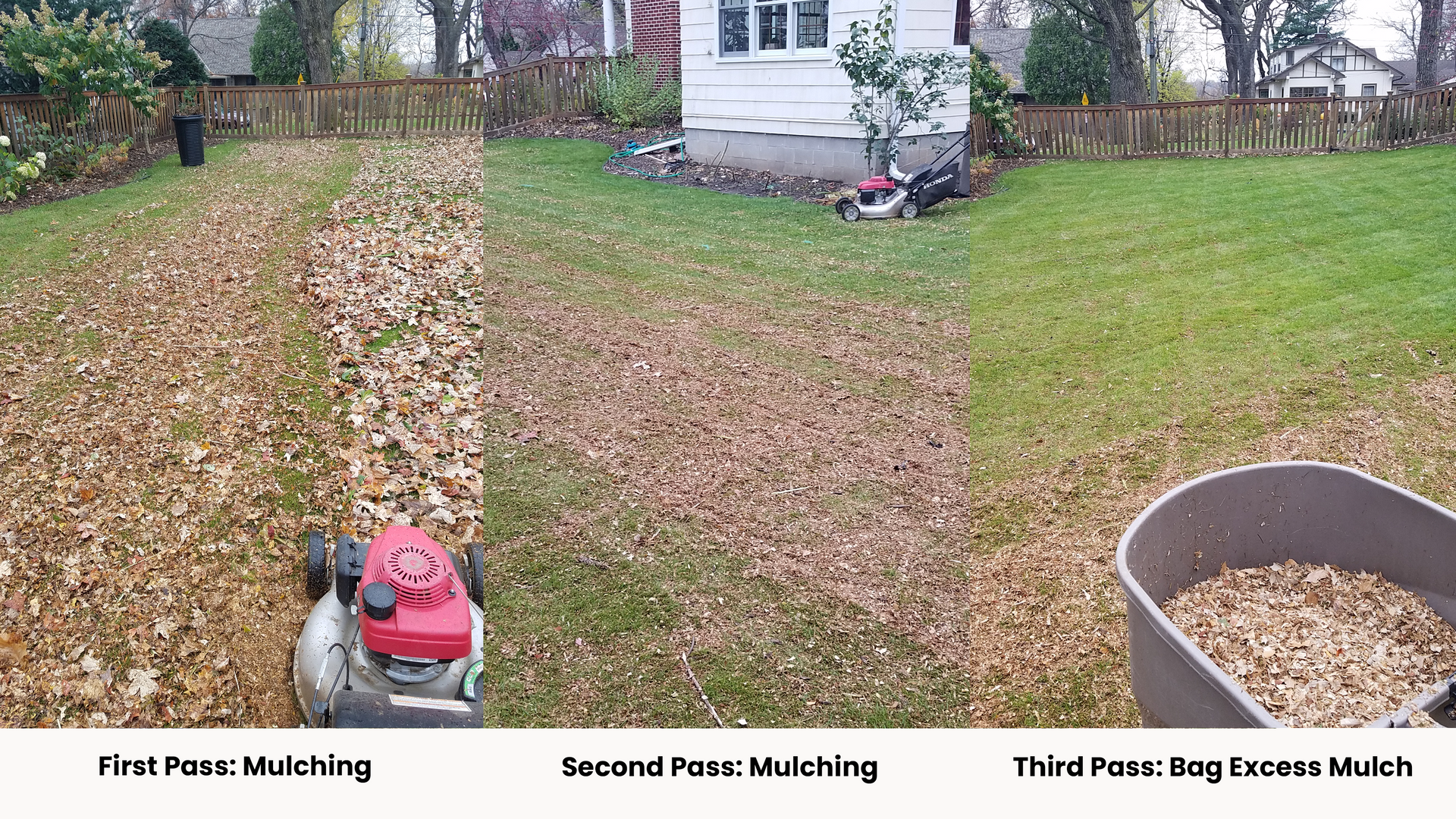
Too Much Thatch is Bad for Lawns - How to Know if You Have a Thatch Problem
One Inch ( 1" ) or more of Thatch, is Too Much
Is the thatch in my yard too thick?
One inch or more of thatch is not good for your lawn
and steps should be taken to reduce the thatch layer.
If you are wondering if thatch is an issue in your yard, measuring will give you the answer. Pull a plug or use a shovel to get a sample of the soil/thatch/turf layer from your lawn. You will see there is a grass layer, crown layer, a thatch layer and a soil layer.
If your thatch layer is over 1” thick then you have a thatch problem and you should start working to reduce the thatch layer.
Six (6) Factors That Can Cause Thatch Problems in MN & How to Fix Them
1) Grass Species:
In MN, our lawns are comprised of cool season grasses. Our favorite of all the cool season grasses for lawns in MN, is Kentucky bluegrass (KBG).
Healthy Kentucky bluegrass lawns produces thatch every year, primarily through the production of rhizomes and stolons.
Rhizomes are essentially continuously growing horizontal underground stems, that spread and send up new shoots (grass blades) and roots. Rhizomes spread below ground, whereas stolons spread at the soil surface.
It's this sod forming growth habit via rhizomes and stolons, that makes KGB so great for growing a thick and durable lawn.
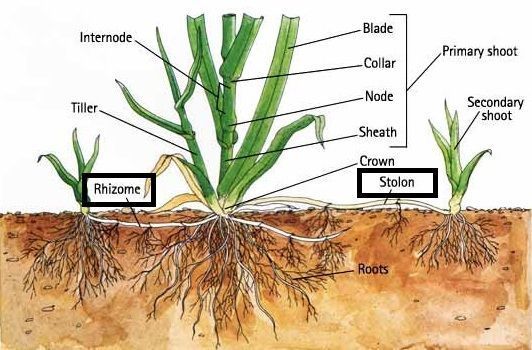
Other cools season grasses that spread via rhizomes include: creeping red fescue and creeping bentgrass (bentgrass varieties aren't great for our MN lawns, they are used primarily for golf course fairways, greens and tee boxes, which are mowed extremely low/short).
The other cool season grasses we use for our lawns, including: perennial ryegrass, tall fescue and most of the fine fescues (other than creeping red) are bunch type grasses, that typically don't produce very much thatch.
Solution : Regularly aerate your lawn to reduce soil compaction and break up thatch layer. Core aeration is the process of punching holes into the soil and pulling out little plugs (cores) to reduce compaction. This is one of the best things you can do to prevent thatch from becoming a problem in your yard.
There's a reason golf courses in MN aerate every single year, because it matters and it works! FYI - you do not need to rake up or remove the plugs, they will break up and disappear on their own, within about 2 weeks.
How often should I aerate my lawn? Ideally, you should aerate your lawn every year.
When should I aerate my lawn? Late Summer or early fall is the best time to Aerate in MN.
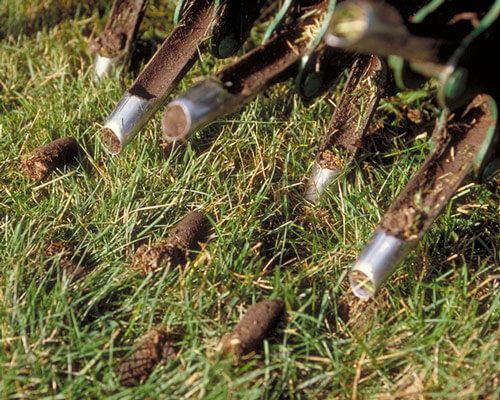
2) Soil PH:
Acidic soils with pH 5.5 or less do not support large populations of the microorganisms needed to breakdown larger amounts of thatch. Ideally, you want your soil pH to be between 6.0 - 7.0 for growing turf in MN.
Solution : Lime application treatments will help increase the soil pH / reduce acidity.
3) Heavy Sand and Clay: Soils that consist of heavy clay and soils that are extremely sandy, also do not support large populations of thatch eating microorganisms.
Solution : Lawns with heavy clay or very sandy soils can be greatly improved by topdressing with topsoil containing lots of organic matter or compost.
4) Over Fertilization : Over fertilizing with nitrogen, particularly applying too much fast release nitrogen at one time, can lead to excessive growth that builds up the thatch layer too quickly.
Solution : At KG Landscape, we spread out our nitrogen fertilizer applicators over several treatments throughout the season. We call this spoon feeding, which means that we apply the total amount of desired nitrogen over several treatments throughout the growing season, during optimal times, rather than all at once.
We also use fertilizer with slow release forms of nitrogen, such as coated urea products, corn gluten and other organic based fertilizers in order to prevent problematic excessive growth. These are all practices we incorporate into our fertilizer and weed control packages
5) Soil Compaction : Heavily compacted soils have less oxygen available to the grass roots, than uncompacted soils of the same type. This means that compacted soils have less oxygen to support healthy populations of the microorganisms that decompose lawn thatch.
Solution : Regularly aerate your lawn to reduce soil compaction and break up thatch layer (every year if you can).
6) Mowing Practices: Small clippings left weekly are not the issue here. In contrast, leaving thick layers of grass clippings (think of cutting a hay field) is problematic for a number of reasons, one of which is that it will cause thatch problems.
Solution: When mowing, only remove 1/3 of the length of the grass each time you mow. If the grass does get too long and clippings become thick or clumpy, then you can bag them and remove the clippings.
Tip: wait for the grass to dry before you mow. Mowing when the lawn is dry helps produce finer and more thoroughly mulched grass clippings, in comparison to cutting when the grass is wet.
Solution : Lime application treatments will help increase the soil pH / reduce acidity.
3) Heavy Sand and Clay: Soils that consist of heavy clay and soils that are extremely sandy, also do not support large populations of thatch eating microorganisms.
Solution : Lawns with heavy clay or very sandy soils can be greatly improved by topdressing with topsoil containing lots of organic matter or compost.
4) Over Fertilization : Over fertilizing with nitrogen, particularly applying too much fast release nitrogen at one time, can lead to excessive growth that builds up the thatch layer too quickly.
Solution : At KG Landscape, we spread out our nitrogen fertilizer applicators over several treatments throughout the season. We call this spoon feeding, which means that we apply the total amount of desired nitrogen over several treatments throughout the growing season, during optimal times, rather than all at once.
We also use fertilizer with slow release forms of nitrogen, such as coated urea products, corn gluten and other organic based fertilizers in order to prevent problematic excessive growth. These are all practices we incorporate into our fertilizer and weed control packages
5) Soil Compaction : Heavily compacted soils have less oxygen available to the grass roots, than uncompacted soils of the same type. This means that compacted soils have less oxygen to support healthy populations of the microorganisms that decompose lawn thatch.
Solution : Regularly aerate your lawn to reduce soil compaction and break up thatch layer (every year if you can).
6) Mowing Practices: Small clippings left weekly are not the issue here. In contrast, leaving thick layers of grass clippings (think of cutting a hay field) is problematic for a number of reasons, one of which is that it will cause thatch problems.
Solution: When mowing, only remove 1/3 of the length of the grass each time you mow. If the grass does get too long and clippings become thick or clumpy, then you can bag them and remove the clippings.
Tip: wait for the grass to dry before you mow. Mowing when the lawn is dry helps produce finer and more thoroughly mulched grass clippings, in comparison to cutting when the grass is wet.
Aerating Your Lawn Regularly - Is Best Way Prevent Thatch Problems
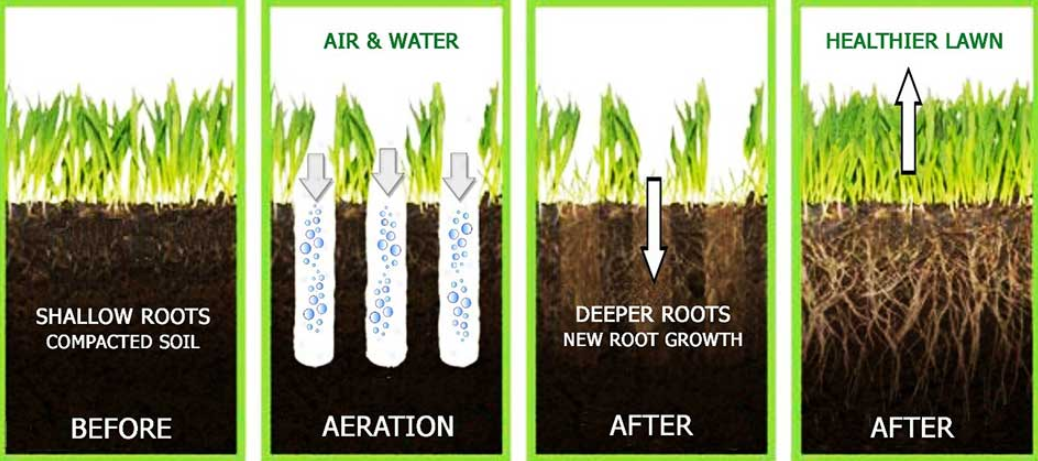
We Recommend Aerating Your Lawn Every Year
Core aerating your lawn is something you can do every year to reduce compaction and prevent thatch issues. Walking on and mowing your lawn creates soil compaction that should be managed annually to help maintain a healthy lawn. If you are not able to aerate once each year, then we recommend aerating at least every other year.
1) Aerating your lawn helps provide the oxygen that is needed for microbes to breakdown and decompose lawn thatch.
2) Aerating a lawn breaks through the soil and thatch layer, allowing water, nutrients and air to reach into the rootzone of the grasses, helping to establish deeper root systems and promoting new growth.
3) The best time of the year to aerate your lawn in MN is late summer / early fall
Learn more about our aeration services
1) Aerating your lawn helps provide the oxygen that is needed for microbes to breakdown and decompose lawn thatch.
2) Aerating a lawn breaks through the soil and thatch layer, allowing water, nutrients and air to reach into the rootzone of the grasses, helping to establish deeper root systems and promoting new growth.
3) The best time of the year to aerate your lawn in MN is late summer / early fall
Learn more about our aeration services
How to Check for Soil Compaction - An Easy Way to Determine if Your Lawn is Too Compacted
How to know if compaction is a problem in your yard? An easy way to check for yourself, is to try to stick a screw driver 5" deep into the soil in your yard. The screw driver should slide in fairly easily. If so, then your soil is likely not too compacted.
If it takes a lot of force to slide the screw driver all 5" down into the ground or if it's not possible at all, then your soil is too compacted. If this is the case than its time to aerate your lawn. Aerating will greatly benefit your lawn by loosening / reducing soil compaction.
Other Ways to Remove Thatch That's Gotten to Thick - 1" Thick or Greater
If you aerate regularly, you should never need to power rake your grass in MN
. However, if you already have 1" or more of thatch and want to remove it quickly, then power raking can help do that and push the reset button. Power raking is definitely the most aggressive way to remove build up thatch and in our opinion, its only useful in certain situations.
Generally, we don't believe power raking in all that helpful for lawns in MN. Here's why:
- Power raking doesn't address the cause of the thatch build-up, which is typically compaction that prevents soil microbes from effectively decomposing thatch.
- Power raking and the clean-up it requires is a lot of added work and expense just to remove thatch that will eventually breakdown naturally in the soil.
- Power raking also removes the good thatch layer too. Remember that some thatch is really good and a healthy lawn should have around a 1/2" layer of thatch here in MN.
- We've yet to see a thatch problem in the twin cities that couldn't be remedied by aerating.
If you have small areas in your lawn where thatch has built up too thick, using a thatch rakes actually works great .
Spring Clean Up Lawn Care Tips - for Managing Thatch
Should I Rake my Yard to Remove Dead Grass in the Spring?
No, you do not need to rake up thatch every spring
Should I remove all of the dead grass in my lawn during a spring clean-up? Save your time and energy and skip the hard raking, because
there's typically no need to rake your yard just to remove dead grass the spring.
Using a rake on dormant grass can damage the lawn by pulling out grass roots and crowns, before they've had a chance to green up and start growing again.
Your grass may look brown or tan in the early spring, but it's not actually dead. This is because our grass goes dormant in the winter, by storing energy in their crown and roots, before letting their shoots/grass blades die back. The tan dead grass you see is just last season's dead grass blades that haven't had the chance to breakdown yet, because the ground has been frozen.
Once soil temps warm up in the spring, the dead grass material from last fall will quickly be broken down by microorganisms in the soil and you wont see it anymore. This is why, spring dethatching is typically unnecessary in MN .
W e don't recommend dethatching in the spring unless the thatch is 1" thick or greater.
Instead of Raking - Use a Leaf Blower for A Spring Clean-up
Use a leaf blower instead of hand or power raking in the spring to remove excess debris, it's easier too. Like raking, leaf blowers do a great job of fluffing up your grass in spring, which will make lawn look a lot nicer after being matted down all winter.
Another benefit of using a blower to fluff up matted down grass, is that this process may help get the grass growing a little faster in the spring. This is because the matted down grass and debris can sometimes act like a blanket, insulating the cold soil from the warm spring air. Fluffing up matted down grass areas lets the warm air and sun heat the soil a little more quickly, speeding up the process of getting your grass growing again in spring.
